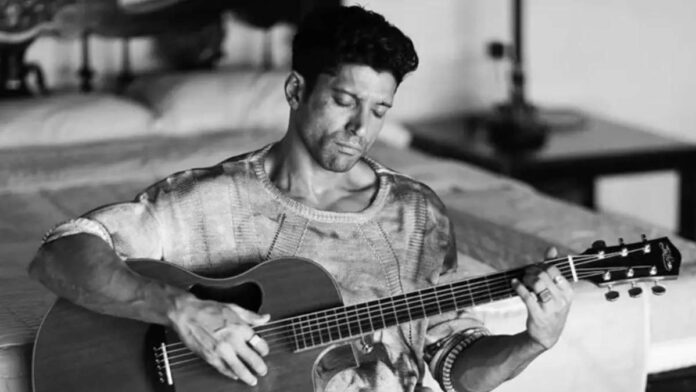We are in Ladakh amidst a raging war between two countries. An army officer sits across a street looking at a journalist who has come to cover the news. They both look at one another, their eyes speaking a thousand words. A song starts playing in the background. On the screen, we see them as trucks pass through between them, breaking the gaze. This sequence from “Lakshya” is so visually and aurally striking, designed with such simplicity that it manages to affect you on a deeper level. Amidst the growing conflict between two nations, the strife of two separated lovers is shown just by some glances. The song has a beginning, middle, and end, merging the images of war and love. Numerous inferences can be drawn just from the 5 minutes about how the song reflects on the relations between India and Pakistan; countries born out of conflict; countries separated. Songs in Farhan Akhtar’s films are a source of dialogue. They don’t pause the story but become a part of it, at times, even elevating the effects of the story by making some important observations.
In his first feature film, “Dil Chahta Hai,” there is a song for all three main characters, which tells us more about them and the situation they are in. And then, there is a song with all three of them together. We have a song for their togetherness, solitude, and love lives. The songs become important plot points as well, and in “Wo ladki hai kahan,” Farhan seems to be giving a tribute of sorts to Hindi film music. Sameer (Saif Ali Khan) goes to watch a film with a girl he loves but is unable to express. In the theater, as the film starts, it is black and white, and Saif is seen dancing wearing a white coat and a thin mustache. The song progresses, and the locations change, reminding us of the way songs were filmed in the 60s and 70s. Quietly then, the song becomes a celebration of love along with a celebration of Hindi film songs. Again, at the beginning of the song, there is a conflict that needs to be resolved, with Sameer wanting to express his love for Pooja. The song does just that for us. As Sameer imagines everything on the screen, so does Pooja. And at the end of the song, as they stand up to leave the theater, everyone sitting in the audience starts moving their hands in the chorus, celebrating the successful expression of love.
Songs with conversations are not new to Hindi cinema. There have been many instances where a conversation happens between people through a song. And Farhan gives a rich context to a moment before it blends seamlessly into a song. “Agar main kahu” in “Lakshya” just begins where the conversation left off, staying in the same location and maintaining our sense of space. He knows when to cut to a different location for the song and when to just stay where the scene is taking place and play the strings from there. Written so simply by Javed Akhtar, the song feels just like a melodic conversation between two people that is a playful exploration of love and its expression. There is a song exploring existential themes treated in an absurdist manner, combining the eerie dancing style and also the music to have an overall comical effect, as the lyrics state, “Main Aisa Kyun hoon.” Not just are the songs important on a narrative level, as they tell us more about the story and the situation, but they make sense outside of the film as well. There is a loose structure apparent in them, which makes them come to life on screen. Just in the middle of “Kandhon se milte hain Kandhe,” sung by Army men on their way to their regiment, there is a burnt truck that they come across. The song changes its rhythm. From an upbeat and motivating feat, it turns into a reflective take on war and how together they can all overcome any hurdle. There are these small visuals that take it to another level, adding more depth and feel.
Farhan Akhtar knows how to create songs. He has cracked the rhythm necessary to fit into the overall narrative so that the songs are not there just for the glamor but to add new meanings to the visuals. And songs have always been an integral part of Indian films and are used in a variety of different ways. Few among them arrive at the meaning that Farhan gives to his songs by bringing in a narrative that is the song’s own while floating in the boat of the story. Through the songs, the story reaches new depths without being absolutely direct about it. They are memorable songs, bringing together the magic of the words of Javed Akhtar and the harmonic freshness of the music of Shankar Ehsaan Loy. All are given a new life by merging new visuals onto them by Farhan. One only wonders why he has stopped making such films.
See More: The Films And Filmmaking Style Of Mrinal Sen, Explained

